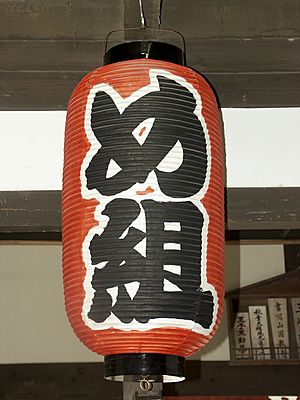Manji (era) facts for kids
The Manji (万治) period was a special way of counting years in Japan. It was an era name or nengō. This period came after the Meireki era and before the Kanbun era.
The Manji era lasted from July 1658 to April 1661. During these years, the emperor of Japan was Emperor Go-Sai.
Key Events of the Manji Era
- 1658 (Manji 1): A very big fire, called the Great Mereiki Fire, had happened just before this era. After the fire, the Japanese government (called the shogunate) created four new teams of firefighters. These teams helped protect the city of Edo (which is now Tokyo) from future fires.
- 1658 (Manji 1): A famous person named Yanagisawa Yoshiyasu was born during this year. He would later become an important official in the government.
- 1659 (Manji 2): Construction started on the Ryōgoku Bridge in Edo. This bridge was very important for people to cross the Sumida River and helped connect different parts of the city.
Connecting Eras
| Manji | 1st | 2nd | 3rd | 4th |
|---|---|---|---|---|
| 1658 | 1659 | 1660 | 1661 |
| Preceded by: Meireki |
Era or nengō: Manji |
Succeeded by: Kanbun |
More to Explore
- You can learn more about the Japanese calendar and its history at the National Diet Library website: "The Japanese Calendar".
Images for kids
-
Katsushika Hokusai created this famous artwork of the Ryōgoku Bridge.

All content from Kiddle encyclopedia articles (including the article images and facts) can be freely used under Attribution-ShareAlike license, unless stated otherwise. Cite this article:
Manji (era) Facts for Kids. Kiddle Encyclopedia.


